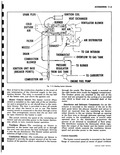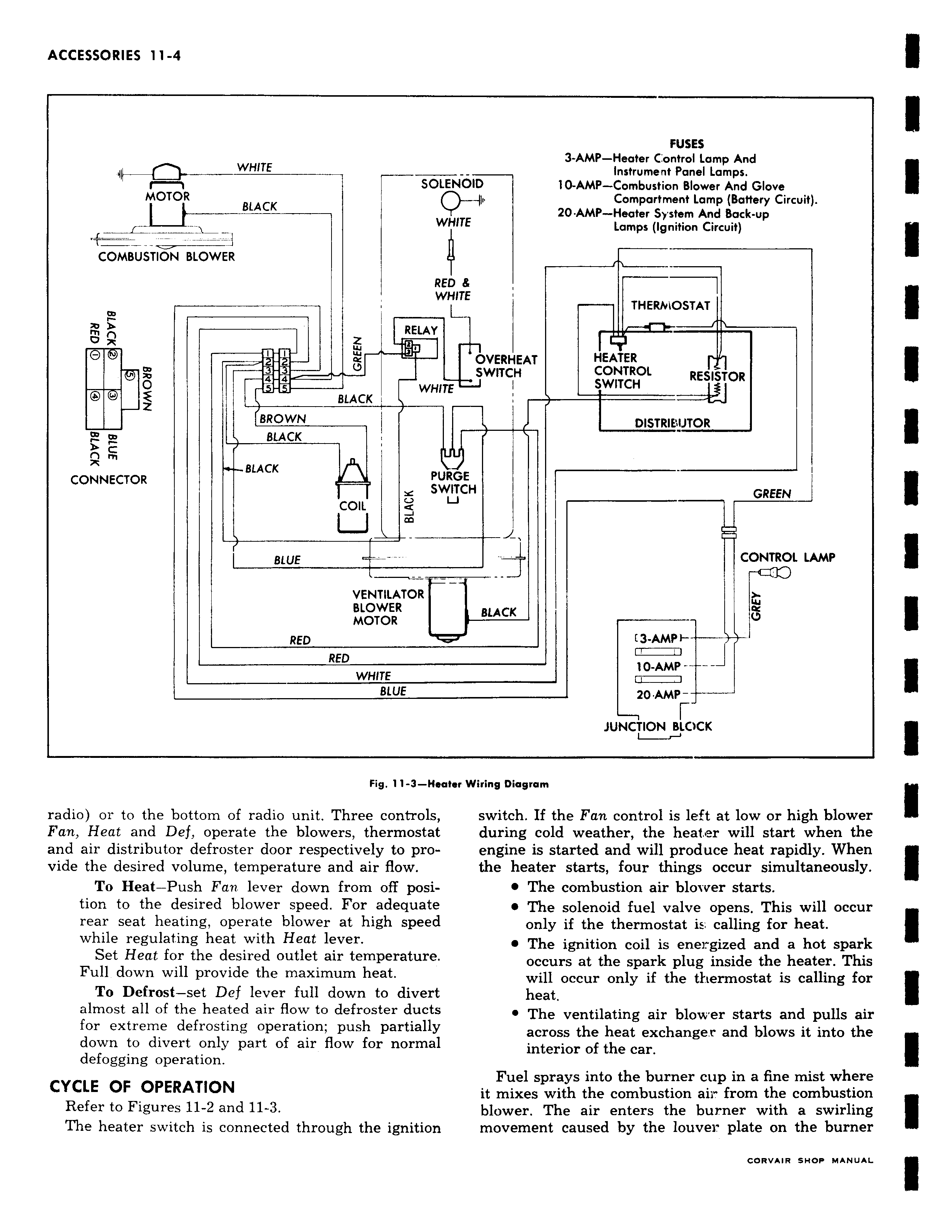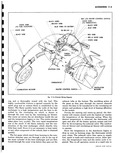Jeep Parts Wiki | Ford Parts Wiki
Home | Search | Browse
Prev

 Next
Next
WHITE r 1 SOLEI MOTOR i BLACK Wh COMBUSTION BLOWER REC Wh j j BROWN n RELAY v O A O 00 4 4 WHITE Z BLACK BROWN BLACK n m BLACK CONNECTOR I PUR SWI COIL a U m BLUE VENTILATOR BLOWER MOTOR RED I RED WHITE BLUE Fig 11 3 Heat radio or to the bottom of radio unit Three controls Fan Heat and Def operate the blowers thermostat and air distributor defroster door respectively to provide the desired volume temperature and air flow To Heat Push Fan lever down from off position to the desired blower speed For adequate rear seat heating operate blower at high speed while regulating heat with Heat lever Set Heat for the desired outlet air temperature Full down will provide the maximum heat To Defrost set Def lever full down to divert almost all of the heated air flow to defroster ducts for extreme defrosting operation push partially down to divert only part of air flow for normal defogging operation CYCLE OF OPERATION Refer to Figures 11 2 and 11 3 The heater switch is connected through the ignition FUSES 3 AMP Heater Control Lamp And Instrument Panel Lamps JOID 10 AMP Combustion Blower And Glove I Compartment Lamp Battery Circuit 20 AMP Heater System And Back up ITE Lamps Ignition Circuit 8 1 17E i THERMOSTAT OVERHEAT HEATER SWITCH CONTROL RESISTOR I SWITCH DISTRIBUTOR i 3E rCH GREEN CONTROL LAMP W BLACK 13 AMP F 10 AMP 20 AMP I JUNCTION BLOCK Pr Wiring Diagram switch If the Fan control is left at low or high blower during cold weather the heater will start when the engine is started and will produce heat rapidly When the heater starts four things occur simultaneously The combustion air blower starts The solenoid fuel valve opens This will occur only if the thermostat i calling for heat The ignition coil is energized and a hot spark occurs at the spark plug inside the heater This will occur only if the thermostat is calling for heat The ventilating air blower starts and pulls air across the heat exchanger and blows it into the interior of the car Fuel sprays into the burner cup in a fine mist where it mixes with the combustion air from the combustion blower The air enters the burner with a swirling movement caused by the louver plate on the burner

 Next
Next